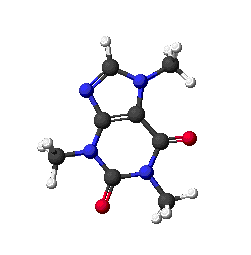
Chemistry
Chemistry 14: 1-2

Homework
Reaction Rates
Chapter 14: 1-2 Homework
- Reading Preparation
- WebLecture
- Study Activity
- Preparation work for chat
- Online Quiz
- Lab Instructions
Reading Preparation
Textbook assignment: Read Kotz and Triechel, Chemistry and Chemical Reactivity Chapter 14: Sections 1 and 2.
Study Notes
- 14.1 The rate of a reaction can be measured by the change in concentration of the reactants or products as time passes. By convention, concentration is represented with brackets: [NO2] means concentration of nitrogen dioxide, so the formula takes the form rate = Δ[substance]/Δt. The reaction rate itself will change over time, usually decelerating with decreasing reactant concentration. The rate of disappearance of reactants will be balanced by the rate of appearance of products, in the ratio of moles specified by the stoichiometric coefficients of the balanced reaction equation.
- 14.2 Reaction rates can be affected by several factors, including concentration, temperature, and the presence of catalysts that can lower the activation energy level required for a reaction to occur.
Key Formula
| Concept | Formula | Notes |
|---|---|---|
| Rate of Reaction |
Δc: change in concentration
Δt: period of time |
|
| General reaction rate equation, the relative rates are |
A, B: reactants
C, D: products a, b, c, d: stoichiometric coefficients Δt: time over which reaction occurs |
Web Lecture
Read the following weblecture before chat: Measuring and Quantifying Reaction Rates
Study Activity
Videos for Chapter 14: The Rates of Chemical Reactions
Review the Videos at Thinkwell Video Lessons.
- Under "Chemical Kinetics"
- Reaction Rates
- An Introduction to Reaction Rates
- Rate Laws: How the Reaction Rate Depends on Concentration
- Determining the Form of a Rate Law
- Reaction Rates
Use the Rates of Reaction Simulationto explore a single collision.
- Accept the default initial scenario.
- Pull the red nob at the bottom of the plunger down and let go to release the first molecule into the chamber. Observe the interactions. Does the first molecule break and reform with the second molecule?
- Vary the temperature. Can you break up the initial molecule?
- Look at the Separation distance and the potential energy graph for the first reaction. How much does potential energy need to increase for the reaction to occur?
- Try each of the reactions. How do they differ? What changes do you have to make in temperature (aka available energy) for the reaction to take place?
Chat Preparation Activities
- Essay question: The Moodle forum for the session will assign a specific study question for you to prepare for chat. You need to read this question and post your answer before chat starts for this session.
- Mastery Exercise: The Moodle Mastery exercise for the chapter will contain sections related to our chat topic. Try to complete these before the chat starts, so that you can ask questions.
Chapter Quiz
- There is no chapter quiz YET.
(Aligns to) AP #10 GUIDED INQUIRY — Determination of solution concentration of copper sulfate solutions using visual colorimetry. — Phase III
Use your set of calibrated solutions to estimate the molarity of a sample of unknown concentration. Submit a formal report of your work for this laboratory experience.
- APGIE Lab 1: What is the Relationship Between the Concentration of a Solution and the Amount of Transmitted Light Through the Solution
- IGHCE Lab 7.5 Determine the Concentration of a Copper Sulfate Pentahydrate Solution through Visual Colorimetry
- HSCMK XIII-1: Determine Boron Concentration with Curcumin using Visual Colorimetry
© 2005 - 2025 This course is offered through Scholars Online, a non-profit organization supporting classical Christian education through online courses. Permission to copy course content (lessons and labs) for personal study is granted to students currently or formerly enrolled in the course through Scholars Online. Reproduction for any other purpose, without the express written consent of the author, is prohibited.